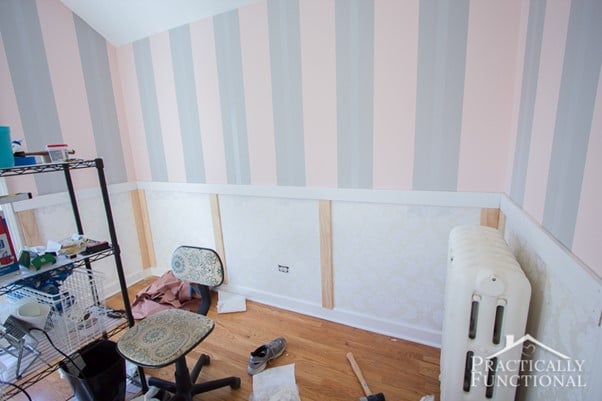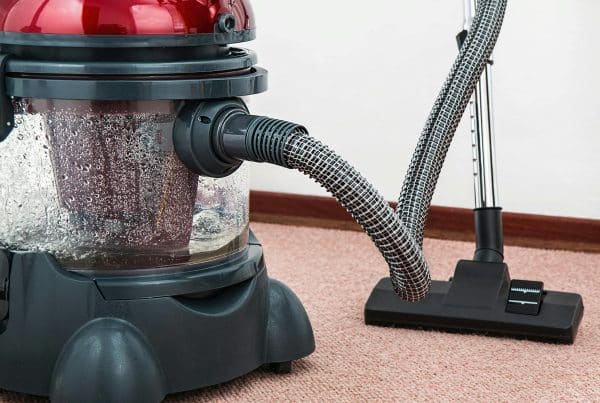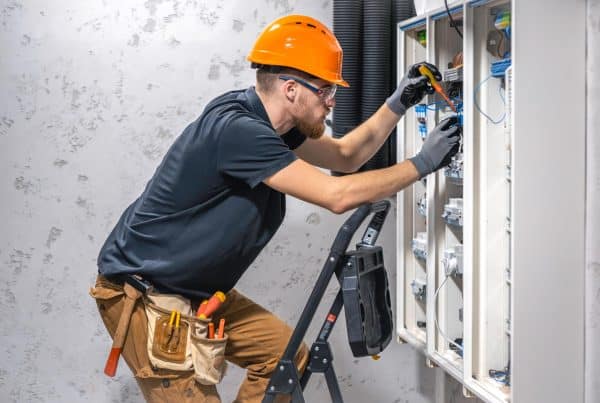Paint is a great way to change the look and feel of your home. For many people, painting wainscoting in their house is one of the first things that they do when they are looking for ways to improve their homes’ appearance.
But before you jump into this project, you need to know how much money it will cost! This blog post will answer all your questions about the cost of painting wainscoting so you can decide if it’s worth doing or not.
What Is Wainscoting and Why Do People Paint It?
Wainscoting is a wooden strip that is traditionally nailed or screwed close to the wall and that can be painted.
People usually paint wainscoting if they want a less frilly, more formal appearance in their rooms.
Wainscoting can also help cover up the uneven painting along the floor line on walls where baseboards were removed to be repainted, as well as balance out big differences in height between two ceilings with different heights, such as when you have cathedral-style living room ceilings and traditional eight-foot square ceiling bedrooms.
Why Painting Your Wainscoting Can Increase the Value of Your Home?
Painted wainscoting can make your home feel more finished and less cluttered. It can also make the room look more elegant and less dated.
Painting your wainscoting is a great way to update an old or outdated space for resale purposes, as well as give it that extra special touch when you’re settling in new.
How Much Does Painting Wainscoting Cost?
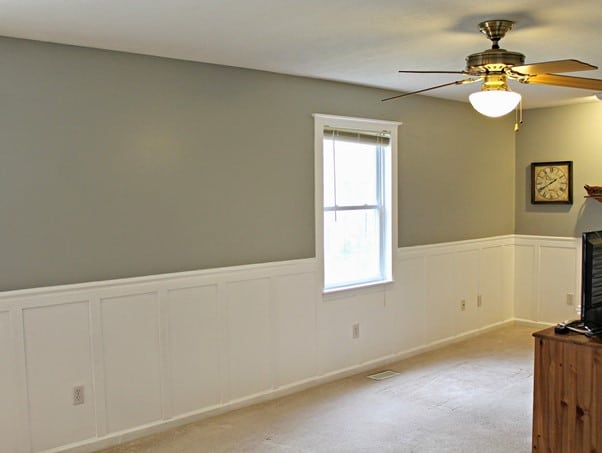
The cost for painting wainscoting ranges from around $350-$450, depending on the size and complexity of the project as well as if there is any damage or preparation required before you start.
Painting can be done in one day but is usually a two-day project. It is recommended to have any loose paint removed from the walls before painting, but this will add an additional $50-$100 to your cost if you go with traditional prep work.
Cost for Painting Wainscoting:
Paint is available in a wide variety of colors, finishes, brands, and textures at your local hardware store or paint retailer. Prices will vary based on the type you choose as well as how much coverage you’ll need to complete your project.
The most common types of paint are latex, and oil based. Latex is less expensive than oil-based, but it can be more difficult to cover the area without multiple coats due to its thin texture.
Oil-Based:
This type of paint will typically cost you between $40-$90 for a gallon which would give you about 400 square feet of coverage.
Costs:
Latex paint will typically cost you between $25-$75 for a gallon which would give you about 300 square feet of coverage with just one coat. This is the most common type, and it’s also cheaper by volume than oil-based paints.
Cost Breakdown for Installing Wainscoting, Including Time to Complete Project and Materials.
- A professional painter will charge between $30-40 per hour to paint wainscoting.
- A pro can usually install about 10 feet of wainscotting per day, so expect the project to take as long as it takes to paint and install a square foot of wainscoting. You’ll need:
- Paint – $25-40/Gallon
- Primer – $1/quart (you’ll need one quart for every gallon of paint you buy)
- Paint brushes, rollers, and sponges – $5-10 (you’ll need a few different types, but not too many)
- Drop cloths or old sheets – $5-10
- Tape measure – $20
- Stool or ladder for overhead work – ~$20-50
- An extra set of hands is always helpful too!
- Total: about $150+ if you’re doing the whole house, less than $40 per linear foot for smaller projects.
If your wainscoting project will take two weeks, and you’ll be using a professional painter to do the work for $40 per hour, then your project will cost about $600.
If you’re painting wainscotting yourself, make sure it’s not too much of an undertaking
Your time is worth money too!
The instructions on how to paint wainscoting are easy to find on YouTube, and you can buy a quart of primer for $20 or less
So, if you’re thinking about installing wainscotting in your home, it might be worth the cost.
Various Ways That Homeowners Can Save Money on This Project by Doing Some of The Work Themselves or Choosing a Less Expensive Paint Color
As a homeowner, you have the option of doing some of the work yourself. Some people
find that they can save money and have more control over the project by taking on certain tasks themselves.
Others choose to paint with a less expensive paint color so that they can afford to do more wainscoting. You can also save money by refinishing the trim instead of painting it.
Pros & Cons to Consider Before You Paint Your Wainscoting
Before you go and paint your wainscoting, there are a few things that you should consider first.
Pros:
Creates an interesting look in the hallway or on the stairs. A dark finish, for example, can help to make any room feel more masculine. Makes the house seem newer and fresher than it has in years!
Cons:
You must remove the old paint first.
Cleaning is much more difficult than with a traditional wall surface because you’ll need to get all the nooks and crannies to make sure that there’s no residue left behind.
You also may find it harder to work around items like radiators, cabinets, and doorways.
The Painting Process of Wainscoting
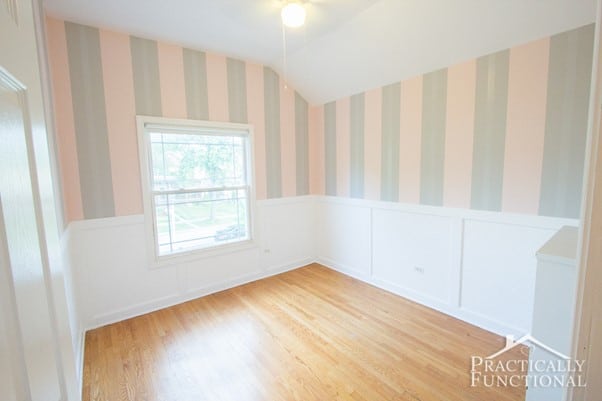
Preparation Of the Surface
The first step to painting wainscoting is preparation. You’ll need to remove any loose paint, dirt, and dust to make sure that the new coat adheres properly. Remove as much of this debris as possible before you start taping off the flooring.
Before you tape off the flooring, cover it with plastic sheeting and place furniture pieces under plastic sheeting or move them out of the room entirely. If you don’t, they are going to be covered in paint (or whatever color you use) once you’re finished!
Make sure that your project is well thought out and scheduled during low-humidity days or times where there is little rain (since wet paint will take longer to dry).
Priming The Surface
Priming the surface is the last step before painting and the most important. Primer is a thin layer of paint that goes on your wainscoting to make it stick better and to make sure that your paint color adheres properly.
Primer should be applied in several thin, even coats for maximum adherence. You want to use an oil-based primer for wainscoting made from natural wood (such as oak, cedar or pine) and an acrylic primer on painted wainscoting.
Painting The Surface
After priming the surface, you’re ready to paint! Read your instructions for the recommended type of paint and use a medium-sized, flat brush.
Even out any paint that’s not completely covering a small area by pulling it over the surface or by using a clean brush. This may take some experimenting.
Painting Technique
When painting your wainscoting, you’ll want to use a brush with bristles as soft as possible. This will help make the job easier and allow for more coverage than if you were to paint it with a roller.
If there are any nooks or crannies in which the pain has pooled after application, use a damp cloth or sponge to gently remove the paint.
Conclusion
Painting wainscoting is not a cheap project. It takes time and expertise to get it done correctly, which can be expensive if you don’t know how to do it yourself or hire an expert for the job.
But with these tips in mind, your decision will be easier when deciding whether painting wainscoting in your home is worth the cost. You should also consider all the benefits that come with making this investment before committing any money!

